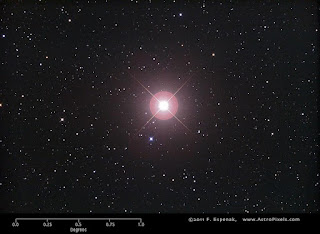Arcturus, an orange giant, graces our night sky from a distance of 35 light-years from Earth. Its striking visibility and radiant hue make it an astronomical marvel. Notably, with an apparent magnitude of -0.05, Arcturus shines brighter than any other star in the Boote constellation, and ranks as the fourth most luminous star in the entire night sky.
Despite being outranked by Sirius, Canopus, and Alpha Centauri, Arcturus deserves special recognition. All three of these stars reside in the southern hemisphere, making Arcturus the most brilliant star visible in the northern hemisphere.
Locating Arcturus: A Guide for Skywatchers
Even for those unfamiliar with astronomy, Arcturus is not hard to find. Due to its exceptional luminosity, it remains visible from nearly any location, making it resistant to high light pollution. To locate Arcturus, begin with the seven stars of the Big Dipper. Visualize a line extending from the handle of the ladle (or the tail of the bear) and follow this curve until you spot a star of extraordinary brightness. You've found Arcturus!
Unveiling Arcturus: An Orange Giant in Our Galaxy
Arcturus, an orange giant, is a celestial body with mass closely matching that of our Sun but at a more advanced stage of evolution. When a star like the Sun exhausts its hydrogen fuel necessary for nuclear reactions, it begins to swell, increasing its size while decreasing its surface temperature. Arcturus, in fact, boasts 1.1 times the mass of the Sun, spans 35 solar diameters, and exhibits a comparatively cooler temperature of 4400 Kelvin, approximately 1500 degrees less than our star.
Arcturus: A Stellar Journey Through Time
With an estimated age of 7 to 8 billion years, Arcturus has a fascinating celestial journey. In its future, when it can no longer counter the gravitational force, the star will cast its surface layers into space, forming a planetary nebula. Its core, meanwhile, will collapse into a white dwarf, marking another exciting phase of its stellar evolution.
Credit: F. Espenak.
You Might Also Like :


















0 commenti:
Post a Comment